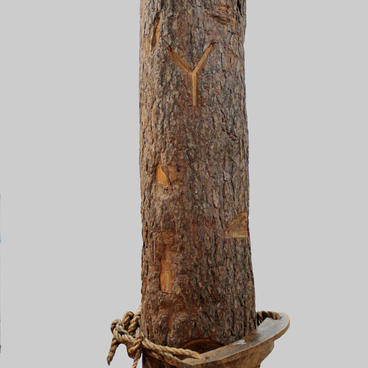The timber wolf is a species of predatory mammals from the Canidae family. DNA studies show that the wolf is the direct ancestor of the domesticated dog, which is commonly regarded as a subspecies of the wolf. In ancient times, the wolf had a vast geographic range across Eurasia and North America. At present, the land area that it inhabits, and the total number of animals, have noticeably decreased. As a key predator, wolves play a very important role in the balance of various ecosystems: temperate forests, boreal forests, tundra, and mountain steppes. n many regions across the world, the wolf is on the verge of complete extinction, although in the northern part of Eurasia and North America, its populations remain stable. Despite the fact that the wolf population continues to decline, it is still hunted in many places.
The size and total weight a wolf can get depends on where it lives; it has been noted that the colder the climate, the larger the animal becomes. The height of these animals ranges from 66 to 86 centimeters, their length can be from 105 to 160 centimeters, and their weight reaches up to 62 kilograms. In Siberia, large, robust wolves can weigh over 77 kilograms.
The size and total weight a wolf can get depends on where it lives; it has been noted that the colder the climate, the larger the animal becomes. The height of these animals ranges from 66 to 86 centimeters, their length can be from 105 to 160 centimeters, and their weight reaches up to 62 kilograms. In Siberia, large, robust wolves can weigh over 77 kilograms.
The alpha male in the pack always goes ahead of the pack with his tail held high. Wolves have their own system of communication. They use howling, howling, wailing, grunting, growling, yapping, and even different movements to communicate. Wolves are capable of picking up a scent at a distance of 1.5 kilometers. These animals have the ability to distinguish 200 million scents, while humans can only distinguish 5 million. A wolf’s brain is 30% larger than that of a dog, and a wolf is able to memorize more necessary information than its close relative.
n mythical fables, legends, and fairy tales, as well as in various superstitions, customs, rituals, and Bashkir traditional festivities, the wolf acts as a totemic ancestor: a the progenitor, guardian, and protector. These legends date back to ancient times, and are slivers of myths about the wanderings of the totemic ancestor, the wolf. For Bashkirs, Kazakhs, Uzbeks, and Turkmens, meeting a wolf along one’s way is considered a good sign. According to legend, it was thanks to the wolf that the Bashkirs found a new homeland in the Ural Mountains. Bashkirs’ ancestors used to call the wolf “kort”. And that is how the name of these tribes appeared: in this case “bash” is interpreted as “head”, and “kort” as wolf.
n mythical fables, legends, and fairy tales, as well as in various superstitions, customs, rituals, and Bashkir traditional festivities, the wolf acts as a totemic ancestor: a the progenitor, guardian, and protector. These legends date back to ancient times, and are slivers of myths about the wanderings of the totemic ancestor, the wolf. For Bashkirs, Kazakhs, Uzbeks, and Turkmens, meeting a wolf along one’s way is considered a good sign. According to legend, it was thanks to the wolf that the Bashkirs found a new homeland in the Ural Mountains. Bashkirs’ ancestors used to call the wolf “kort”. And that is how the name of these tribes appeared: in this case “bash” is interpreted as “head”, and “kort” as wolf.



